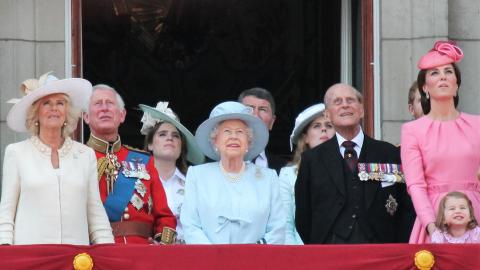The Romanovs: Biography
In the midst of the Russian Revolution the Royal Family was imprisoned and then disappeared. They were finally executed in a lonely cellar and buried in unmarked grave.
Nicholas Romanov was born on 19 May 1868 to Tsar Alexander III and his wife, Danish princess Marie Fedorovna. He was the eldest of six children and became Tsar Nicholas II in 1894 when his father died at the age of 49 of kidney failure.
Nicholas, who was a gentle man, had not been trained to be the Tsar and was unprepared for the role. At the time of his father's death, he was engaged to German Alix of Hesse, the granddaughter of English Queen Victoria I. They were married on 26 November 1894.
They had five children together; Olga (1895), Tatiana (1897), Maria (1899) and Anastasia (1901). A much-longed for male heir was born on 12 August 1904 and they named him Alexis.
The Romanovs hid a secret from the Russian people. Their son had the blood condition hemophilia and the family did not want the public to know as they may have lost their faith in the Imperial regime. Instead they asked Grigory Rasputin, known for his healing abilities, to look after their son. In 1908, Alexis was taken seriously ill but Rasputin stopped the bleeding. From that point on, he was a member of the royal entourage.
In August 1914, Russia went to war against Germany and Austria, which boosted the Tsar's popularity at first. Nicholas often travelled to the Eastern Front to improve morale among the troops but the family's popularity faded following heavy casualties in the war.
The Tsarina had been put in charge of domestic affairs and dismissed plenty of ministers for which Rasputin was blamed. Rumours emerged that the two were lovers. It was also thought that the pair were leading a pro-German court group, which led to Rasputin's murder in December 1916.
On 2 March, 1917, Tsar Nicholas II, head of the Russian Romanov dynasty, was forced to abdicate after 23 years. The vast country was in the throes of revolution. The Imperial Family was exiled to Siberia, and a year later, moved to Ekaterinburg in the Ural Mountains.
By the summer of 1918, the Tsar, his wife, four daughters and son had vanished.
Finally, in October 1994, DNA testing put an end to speculation as to the fate of the Tsar and his family. In 1995, their remains were finally laid to rest.
Rumours have since abounded that Anastasia managed to escape.















